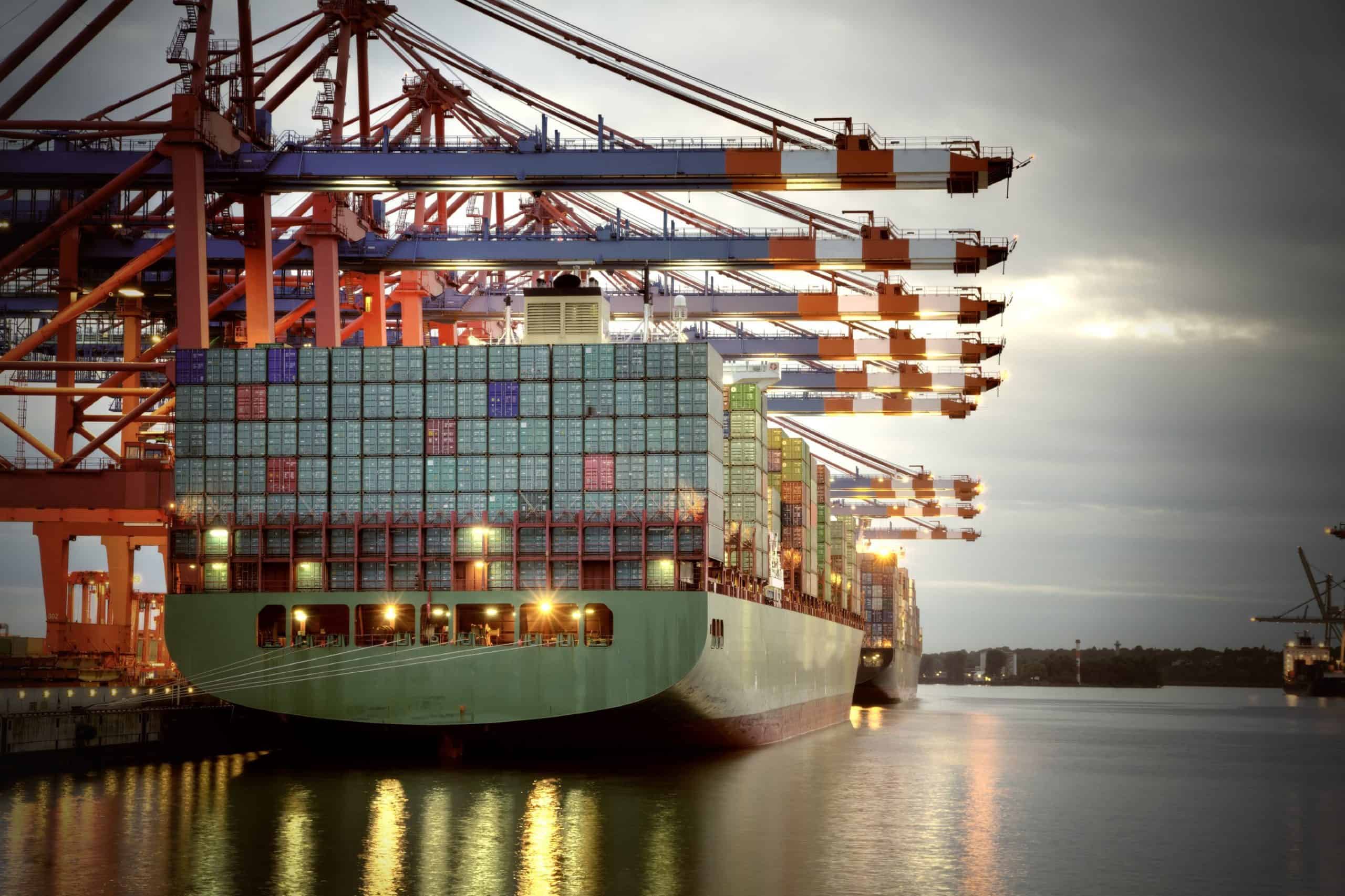Customer Service: Lost in the Shuffle of a Mature Ocean Logistics Industry

We all watched it happen… It started with the global trade boom of the 1990’s and early 2000’s; trailed by significant investment from steamship lines in an effort to ramp up capacity in the late 2000’s – only to be met fiercely by the Great Recession, and a flattening of demand. Today, e-commerce pulls heavily on transportation networks while the fickle consumer demands faster & faster and cheaper & cheaper. The signs were there that the ocean logistics industry was going through a “sea change” (pun intended) and would look much different today than it did even 10 years ago. And here we are – an ocean logistics industry once driven by carrier investment chasing fast growth in demand has now reached a mature stage where carrier differentiation is elusive, and vessel oversupply structurally limits their ability to profit.
Ocean carrier efforts to manage vessel oversupply have led to a variety of shifts in partnerships and alliances. While the latest carrier alliances may have proven beneficial to bottom lines, it has not been without disruption to downstream suppliers and customers. Carriers have shed ancillary service offerings previously bundled with ocean container movement, opting to focus on lower cost port-to-port & port-to-container yard moves. As carriers pump higher capacity vessels into ports, terminal operations, challenged with their own inefficiency and lack of infrastructure find it difficult to keep up with waves of volume. Less sophisticated truck networks that lack automation & technology struggle to provide true last mile delivery visibility. Most carriers have offloaded functions such as chassis services onto other providers – further elongating the supply chain with more disparate providers involved in each segment. In fact, most service-based activities required during the international ocean logistics process have been pushed off to downstream parties in the transaction. The trailing effect of steamship carries continuing to push out cost – the customer service interface has become lost in the shuffle.
As Shippers and Service Providers look ahead to peak season 2017 and beyond – How Can Customer Service get Shuffled Back to the Top of the Deck?
Today’s technology-first service providers have created a marketplace for shippers to competitively procure ocean container bookings — self-service choice has become a powerful tool for shippers ultimately focused squarely on cost. Technology has also given shippers better visibility to ocean-laden cargo, and allowed for more predictability in-transit.
Recently in June of 2017, steamship carrier Maersk was hit by a cyber-attack that crippled their systems & operations for several days. Whether it be cyber-attacks, capacity challenges, financial risk, labor unrest, regulatory change, politics, or Mother Nature – supply chain disruption is costly. The high-touch, responsive service required to dig in and investigate the true location of in-transit cargo, as well as proactively provide a solution to correct the problem has been foregone in the name of choosing the lowest price option.
To help shippers navigate this year’s shipping season, we developed this Peak Season 2017 Ocean Transportation Infographic.
Understanding the TRUE Cost of International Logistics:
(Hint: the lowest price is often not the lowest cost)
How do you determine the actual cost, meaning the complete financial impact, of an international ocean transaction? Oftentimes, the front end benefits of choosing the low-price provider – be it through direct contracting with the carrier or secured through a forwarder, do not represent the full cost incurred by a shipper’s operation. Sure, a hundred or few hundred dollars saved per container can paint a nice picture on the top half of a transportation manager’s monthly P&L. To quantify the TRUE cost we must look at the full scope of the logistics transaction:
- Additional occurrences of downstream supply chain costs: caused by having more disconnected parties involved in the transaction, including port & terminal charges, per diem & breakbulk charges, chassis service fees, increased drayage, etc.
- Cost of cargo delays: created by rolled bookings, port congestion, & other ocean logistics inefficiencies
- Cost of insufficient visibility across the supply chain: starting from not knowing who is handling cargo at origin, to disconnected service providers handling last mile delivery.
And the True Unknown – the Overhead cost impact on a shipper’s team. As carriers and low-price forwarders continue to shift service responsibility onto the shipper, the true financial impact begins to outweigh the front-end container price savings. Stripping a shipper of the customer service interface creates a new set of responsibilities that must be absorbed by the shipper’s internal teams, including shipment tracking, managing transitions between multiple providers from ocean vessel to port to final delivery, as well as working to solve problems that inherently come up as cargo moves around the world. Not to mention the opportunity cost created as operations & customer service teams shift their focus away from servicing their own customers or supporting sales, and onto administrative ocean logistics activities.
Ocean Logistics Visibility – More than just Track & Trace:
Rapid enhancements in technology have given shippers new levels of visibility into the activities within their supply chain. Real-time data integration connects parties from origin to destination, data visualization & business intelligence provides insight and planning capability, while mobile devices provide anytime-anyplace accessibility. However, true visibility lies in the ability not only to see & understand, but also to react, problem solve, & execute a solution.
When technology fails or provides an inaccurate depiction of the true narrative of a shipment, shippers are often left to identify the root cause of a transportation delay, and then develop a creative solution on their own. Quickly finding the actual location of delayed freight, and being able to immediately divert or redeploy cargo can reduce or completely mitigate supply chain impact. Technology is a powerful tool, however it must be combined by human proactivity, responsiveness, market knowledge and a solution mindset to create true visibility. Although carriers and many low-price tech-only forwarders have dramatically enhanced technological capabilities – without the service component it becomes much less powerful & useful to the shipper.
Customer Service – The Forwarder’s Ace in the Hole:
Ocean transportation is becoming more of a transaction-driven business – however it should never be done transactionally. By sacrificing service for the lowest price, a shipper runs the risk of:
- Reducing visibility & predictability in their supply chain
- Increasing supply chain risk
- Limiting the ability to come up with proactive solutions to problems that occur during transit
- Decreasing the efficiency & productivity of their internal operations & customer service teams
- and…it actually Increases their true logistics costs
Filling this service gap is something importers & shippers must face the reality of as carriers and low-price forwarders continue to absolve themselves of responsibility for service-based activities. As the ocean logistics industry continues to evolve from today’s mature, ultra-price competitive state – the importance of relationships within the supply chain, and true partnerships between shippers and service providers (both forwarders and transportation providers) becomes the last true differentiator, especially in the eyes of small & mid-sized importers.
Get Insights. Stay Ahead.
Get the latest news and insights via email on warehouse improvement, transportation optimization, labor strikes and international shipping rate changes.Popular Posts
Search Posts
-
2024 Q1 Freight Landscape: Trends, Challenges, and Predictions
As the first quarter of 2024 comes to an end, here are some observations over the past few months as well as predictions about the trucking...
+ Read more -
Baltimore Bridge Impact Assessment – Update
Following the recent Baltimore Bridge collapse and subsequent port closures, we want to keep our customers informed about the situation and...
+ Read more -
Global Momentum Builds for Charge on Global Shipping Sector’s CO2 Emissions
A growing coalition of 47 countries, including key players like the European Union, Canada, Japan, and various Pacific Island nations, is...
+ Read more










